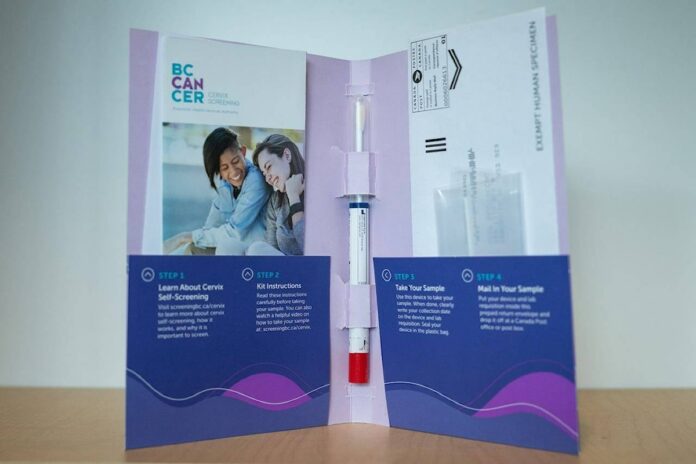BC is the first province to offer at-home HPV testing
The rest of Canada should follow British Columbia's lead in its new approach to cervical cancer screening, the Canadian Cancer Society and the Society of Obstetricians and Gynecologists of Canada said Wednesday.
On Tuesday, the British Columbia government announced that human papillomavirus (HPV) testing will gradually replace the Pap test as the standard screening. HPV causes cervical cancer.
Although Prince Edward Island was the first province to replace Pap tests with HPV tests in doctor's offices, BC is the first province in Canada to offer the option to do the HPV tests at home starting January 29th.
Women and other people with a cervix between the ages of 25 and 69 in British Columbia can order a self-test kit, which they then return to the laboratory in an envelope included in the kit.
The self-administered test has already been used in some communities in British Columbia, part of a pilot program launched in 2021.
Healthcare providers in British Columbia will transition from using Pap tests to HPV testing over the next three years, depending on the age group of patients, starting with those aged 55 and over.
“We've been advocating for the introduction of HPV testing as a primary test for a long time and really commend BC as kind of the first step towards eliminating cervical cancer in our lifetime,” said Charles Aruliah, advocacy manager for the Canadian Cancer Society, in an interview on Wednesday .
The Society of Obstetricians and Gynecologists of Canada also wants the remaining provinces and territories to adopt the HPV test and offer the option of home self-testing, Dr. Amanda Black, the society's president.
Both Black and Aruliah said the HPV test is a more effective screening tool for cervical cancer than the Pap test.
The Pap test identifies changes and abnormalities in the cells of the cervix, while the HPV test can detect the presence of the virus before these cell changes occur, they said.
The HPV test is also easier to perform, so you can do it yourself.
“(The) advantage of self-screening is certainly that it can potentially reach patients who otherwise would not have access to medical care,” Black said.
The test could be an option for people who live in remote areas and don't have easy access to a health care provider, she said.
It could also be a way to reach people who have experienced cultural or racial trauma in the health care system and therefore avoid physical examinations or interactions with providers.
The at-home kit is a swab that must be inserted a few centimeters into the vagina and then rotated for 20 to 30 seconds, Black said.
The swab doesn't have to reach the cervix, so the chance of someone doing the test incorrectly is low, she said.
If someone tests positive for HPV with the home test, they will be referred to a health care provider for follow-up care, Black said.
She emphasized that vaccination against HPV is another important preventive measure against cervical cancer.
Other provinces besides BC and PEI are in various stages of planning a transition from Pap testing to HPV testing, including Quebec, Ontario and Manitoba, Aruliah said.
ALSO READ: BC introduces self-screening for HPV amid rising cervical cancer rates
















